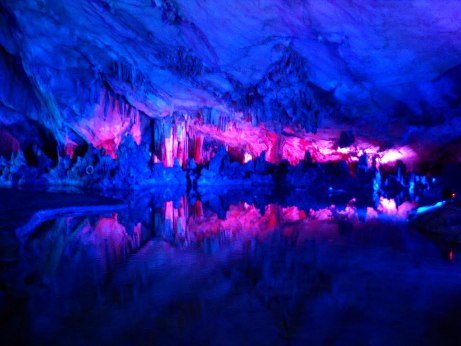There is evidence, graffiti, showing that the cave was already inhabited 1200 years ago, when it was probably considered a sacred place. Remained unknown for centuries, was rediscovered only in 1940, and since then its popularity has been increasing more and more, so that today it has become a popular tourist attraction. A wonderful multi-color cave.
The Cave is named after the abundant amount of reeds that grow at its entrance, reeds that were collected to build small flutes; but not for this activity that the cave was rediscovered. All because of the war, or rather of the Japanese invasion of China in the 30’s.
The interior of the cave is a real a show for the presence of beautiful geological formations. Created by thousands of years of water erosion on the soft limestone, the cave has stalactites, stalagmites, and stone columns that seem to rise from the floor to the ceiling. The walls are “decorated” by rippling, these fruit of centuries of erosion, which infiltrates deeply into the rock.
Today the cave is cleverly lit by many multicolored light, hidden between the cracks and crevices of this large underground space. The effect is almost surreal, with lights that transform the space, otherwise the dark, in a strange mix of neon colors and powerful and rough limestone boulders.
The cave is located a few kilometers from the city of Guilin, one of the most picturesque towns in the south of China, which for its natural scenery that surrounds it, one of the most popular tourist destinations in the country.

